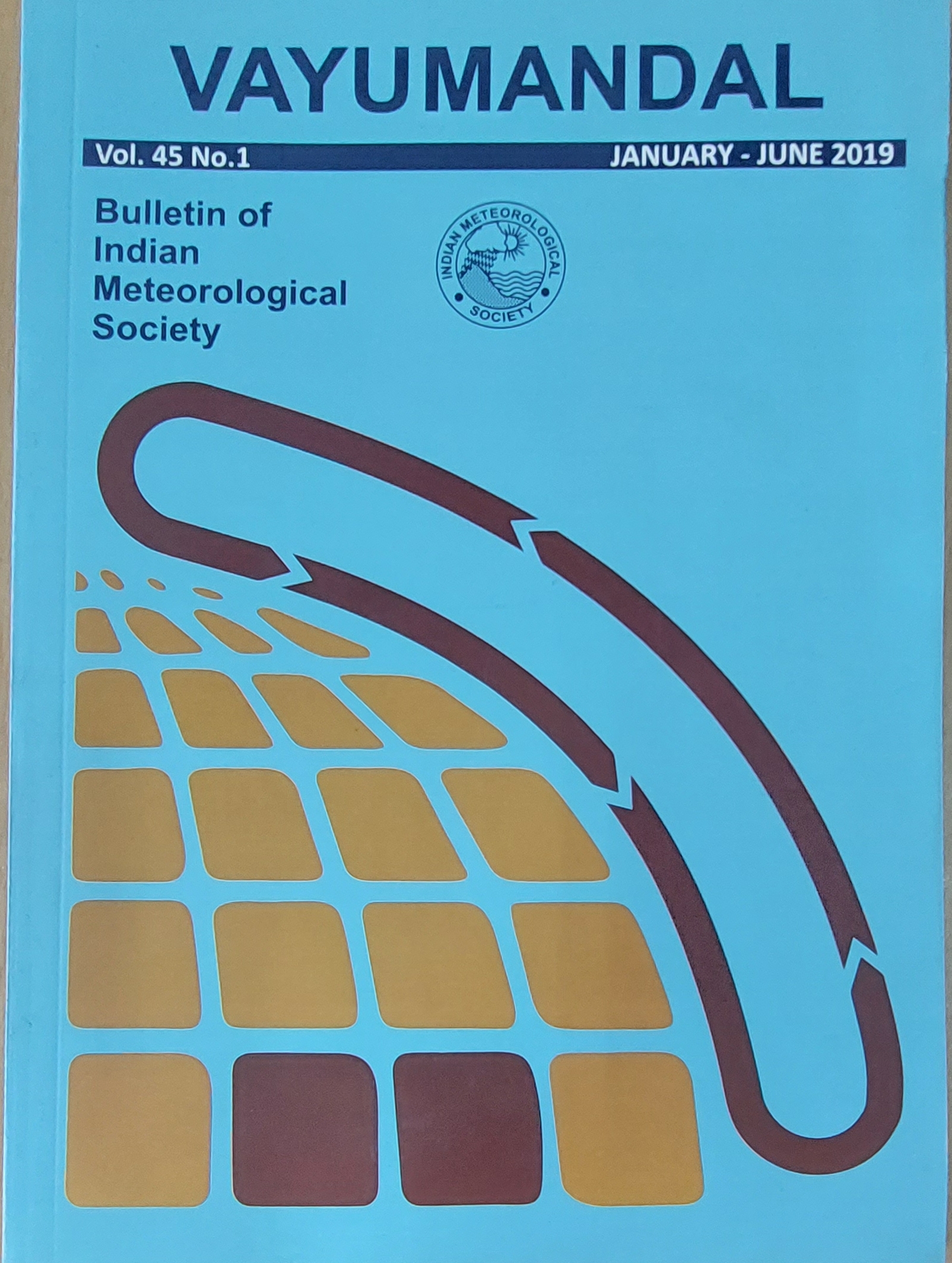Prediction of Radiative Fog Events over Indo-Gangetic Plains of India
Abstract
Radiative fog formation is a complex phenomenon which involves local physical and microphysical
processes and takes place under specific meteorological conditions. The present study aims to
quantify the ability of a global numerical weather prediction (NWP) model to analyze and forecast the
conditions favourable for radiative fog formation over northern plains i.e. Indo-Gangetic (IG) plains
of India. The ground based observations from the stations lying over IG plains of India are used to
identify the meteorological conditions favourable for the formation of radiative fog. This is
accomplished by setting the thresholds to the key meteorological variables such as -2 m temperature
and dew point temperature, dew point depression and 10 m wind speed. The same thresholds are
applied to meteorological variables from the model to evaluate the ability of the global NWP model to
reproduce these conditions. The observations during the study period indicate that use of these
threshold leads to detection of the radiative fog events. It is also found, that with this simple
methodology model is able to detect the meteorological conditions leading to observed radiative fog.
The spatial plots of visibility forecast available from the model predicts the drop in visibility during
the fog event.
Copyright (c) 2024 Vayumandal

This work is licensed under a Creative Commons Attribution-NonCommercial 4.0 International License.
All articles published by VAYUMANDAL are licensed under the Creative Commons Attribution 4.0 International License. This permits anyone.
Anyone is free:
- To Share - to copy, distribute and transmit the work
- To Remix - to adapt the work.
Under the following conditions:
- Share - copy and redistribute the material in any medium or format
- Adapt - remix, transform, and build upon the material for any purpose, even
commercially.


